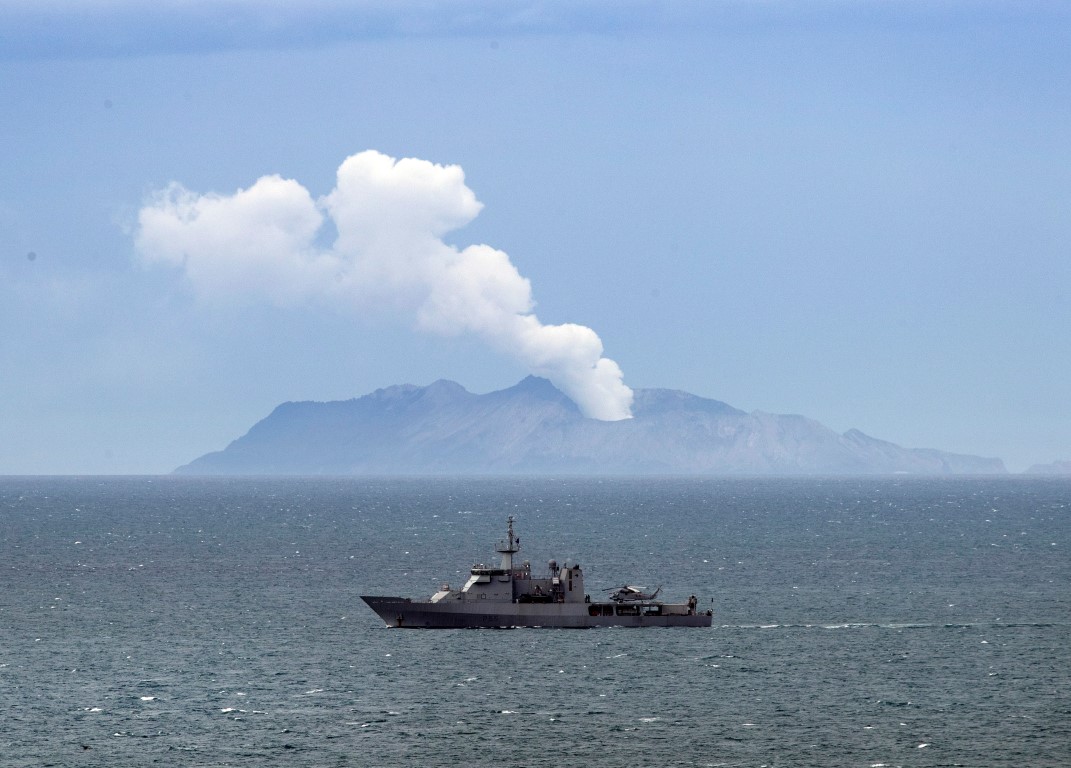
Treating so many burns at one time was described as unprecedented, as police promised the families of those killed that their loved ones’ bodies would be returned.
The question last night was: when? Scientists warned that, for the next 24 hours, there remained a 40%-60% chance of another eruption akin to that which caused such destruction on Monday.
That eruption killed six of the 47 people from all over the world who were on or near White Island. Eight remain missing and are presumed dead, lying where they fell.
Surgeons were working around the clock to treat 29 patients under intensive hospital care at four burn units at Middlemore, Waikato, Hutt Valley and Christchurch.
Their need for temporary skin grafts will outstrip local skin supplies. Surgeons needed what would ordinarily come from about 60 donors. Only five to 10 people donate skin in New Zealand each year.
Counties Manukau District Health Board chief medical officer Dr Peter Watson confirmed another 120sqm of skin, to be used for dressings to help patients stay infection free, had been ordered from overseas.
Middlemore Hospital’s emergency department clinical director Vanessa Thornton described the extent of the burns being treated.
Two patients suffered burns covering 90% of their body. All had more than 30% burns and 22 still required airway support.
The hospital’s clinical director of surgery and perioperative services, Dr John Kenealy, detailed the sheer size of the task facing medical teams.
‘‘This number of burns at one time is certainly unprecedented in New Zealand and it’s unprecedented in most places in the world,’’ Dr Kenealy said.
New Zealand Blood Service chief medical officer Sarah Morley said New Zealand regularly got skin from the US but required additional support since the eruption.
‘‘Certainly, the surgeons might come back to us more depending on how the patients are doing and we will continue to maintain our stock to as high a number as we can,’’ Ms Morley said.
The skin is being transported in special frozen storage. Skin from Australia will arrive within 12-24 hours and from the US between 24-36 hours from the time of order.
The demand for blood and plasma increased dramatically but there was no shortage, Ms Morley said.
The medical response continued as police deputy commissioner John Tims yesterday told a press conference that the police ‘‘will deliver on the promise of our return to the island’’ and that the victims’ families and friends ‘‘deserve closure’’.
The recovery could start when the risk could be managed, and GNS Science senior scientist Graham Leonard warned the eruption risk had moved from high to even higher.
Mr Tims said police had a recovery plan: ‘‘It is our number one priority. We will return.’’
Most of those on the island were passengers on the cruise ship Ovation of the Seas and were from Australia, China, Germany, Malaysia, Britain and the US. Five were from New Zealand.
The dead were being transported to Auckland for postmortems and formal identification.
Civil Defence Emergency Management director Sarah Stuart-Black said international families of the dead and missing were due to start arriving in Whakatane and processes were in place to accommodate them.
Immigration NZ would expedite visa applications, she said.
Acting assistant commissioner Bruce Bird said experts were working to make the identification process ‘‘as smooth and accurately and as swift’’ as they could.
Victim identification was being done by ‘‘stringent’’ international standards and ‘‘will take some time’’.
Chief Coroner Judge Deborah Marshall said a team of police, pathologists, scientists and forensic odontologists would match bodies to identities before referring each to one of three coroners for final sign off.
Only then could the bodies be released.
‘‘We will be working as hard as we can to return any deceased to their whanau,’’ she said.
Whakatane Mayor Judy Turner said local families were ‘‘desperate’’ to bring their loved ones home.
She described the situation as ‘‘horrendous’’.
-Additionally reported by RNZ











